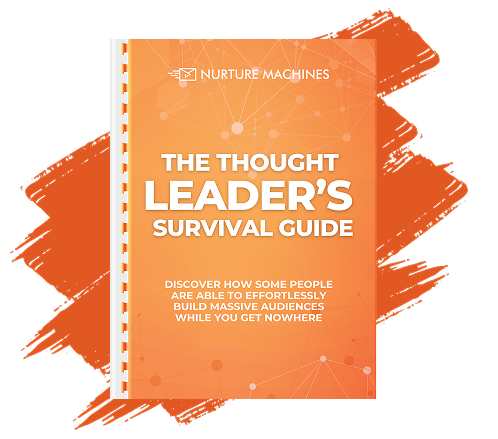Understanding consumer behavior is critical for crafting effective marketing strategies. In today’s data-driven landscape, marketers must tap into the intricacies of consumer actions, motivations, and decision-making processes to refine target messaging and boost conversion rates. By leveraging advances in artificial intelligence, web analytics, and digital marketing tools, companies can precisely gauge customer satisfaction, predict shopping trends, and optimize customer lifetime value. This article delves into the fundamentals of consumer behavior insights, explores methods for gathering actionable data, identifies key factors that drive consumer actions, and discusses how these insights translate into effective marketing strategies. Detailed research studies, real-world examples, and actionable lists underscore the importance of a data-informed approach. The goal is to aid thought leaders, personal brands, and consultants in automating client acquisition and nurturing leads through an in-depth understanding of consumer behavior.
Grasping the Fundamentals of Consumer Behavior Insights

Understanding consumer behavior is the cornerstone of any successful marketing strategy. This section defines the underlying actions and motivations that drive buyers and explains why these decisions are central to marketing success.
Defining Consumer Actions and Motivations
Consumer actions are the observable behaviors exhibited by customers when they interact with a product or service. These actions include browsing, purchasing, providing feedback, and abandoning shopping carts. Motivations, on the other hand, are the internal impulses that drive these decisions. For example, a consumer might purchase a sustainable product because of environmental concerns or choose a luxury brand for its perceived quality. According to a study by Kotler and Keller (2016), motivations can be subdivided into intrinsic and extrinsic factors, which are influenced by personal values, cultural background, and social context. Understanding these aspects can lead to more personally resonant marketing messages.
The Importance of Understanding Buyer Decisions for Marketing
Marketers who clearly understand why buyers make certain decisions can tailor their campaigns to appeal directly to those motivations. By leveraging consumer insight, companies can develop targeted advertising strategies that reduce marketing waste and enhance return on investment. Data analysis using consumer behavior analytics tools has proven that campaigns refined with these insights report up to a 25% increase in engagement and conversion rates. Furthermore, understanding buyer decisions allows companies to optimize customer service and improve overall brand reputation, making these insights an essential element in achieving sustainable business growth.
Core Principles of How People Choose Products
The process of choosing a product is complex and typically involves several stages: problem recognition, information search, evaluation of alternatives, purchase decision, and post-purchase behavior. Consumers weigh factors such as product quality, price, personal preferences, and brand reputation when making a selection. Research by Schiffman and Kanuk (2014) indicates that both rational evaluation and emotional responses frequently drive product choice. Recognizing these dynamics is crucial; for instance, product reviews and testimonials play significant roles in validating the consumer’s choice post-purchase. Marketers can influence this process by strategically positioning their products and emphasizing key differentiators that address both logical and emotional determinants of choice.
How Consumer Behavior Insights Shape Marketing Approaches
Consumer insights directly influence how strategies are formulated in digital marketing, advertising, and product development. For instance, data derived from session replay tools and customer feedback surveys can help identify pain points in the online shopping experience. With these insights, marketers can adjust website layouts to improve user experience and conversion rates. Moreover, insights garnered from social media analytics and influencer marketing campaigns offer a nuanced perspective on current consumer trends and evolving buying patterns. Companies continually refine their messaging by testing variations of calls-to-action, personalization techniques, and targeted advertising strategies based on real-time consumer data.
Differentiating Types of Consumer Purchase Patterns
Consumers demonstrate a wide range of purchase patterns influenced by economic conditions, personal circumstances, and behavioral biases. Some consumers engage in impulse buying, while others follow deliberate, information-based purchase processes. The segmentation of these behaviors—ranging from habitual purchasers to one-time buyers—can be key to developing precise customer personas. For example, during economic uncertainty, consumers may shift from high-end products to more affordable alternatives, prompting marketers to adjust their campaigns accordingly. Analysis of purchasing patterns has been advanced using large datasets from web analytics, offering measurable insights into consumer frequency, average spend, and product affinity trends.
Methods for Acquiring Actionable Consumer Behavior

Collecting comprehensive consumer behavior insights requires a strategic blend of methodologies. Companies leverage both quantitative data analytics and qualitative research to form a holistic view of customer preferences and actions. This section outlines various methods, evaluates their effectiveness, and discusses ethical considerations and practical applications in developing a refined marketing strategy.
Collecting Data on Customer Preferences and Habits
Marketers utilize a combination of large-scale surveys, purchase history tracking, and loyalty program data to gather detailed customer profiles. Data analysis platforms such as Google Analytics and CRM systems provide detailed metrics on customer visit frequency, bounce rates, and average time spent on websites. Collecting data on consumer preferences allows companies to predict future behaviors and adjust homepages, emails, and mobile app notifications to better align with user interests.
Utilizing Surveys to Gather Direct Consumer Feedback
Surveys offer direct, actionable insights. They enable companies to ask specific questions regarding product satisfaction, pricing perceptions, and potential improvements. Modern survey tools integrate AI to detect sentiment and highlight key areas of concern expressed by consumers. Surveys should be designed to include both multiple-choice questions and open-ended responses that provide detailed feedback. Additionally, incentives such as discount codes can encourage participation, ensuring a robust sample size that lends credibility to the results.
Analyzing Online Interactions for Behavior Clues
Digital footprints left by consumers are a goldmine for understanding shopping and browsing habits. Tools that analyze click-through rates, session replays, and heat maps offer insights into customer navigation patterns. For example, heat map analysis by a leading e-commerce company revealed that users often overlooked the “add-to-cart” button when it was placed too far from product details, prompting a rapid redesign that led to a 15% increase in conversions. Furthermore, tracking online interactions helps refine targeted advertising strategies in real-time, ensuring that marketing budgets are spent efficiently on channels that yield the highest returns. Advanced platforms like UserPilot and other session replay tools continuously optimize user experiences based on real-time data analysis.
Conducting Observational Studies of Shopper Journeys
Observational research, including in-store tracking and customer journey mapping, provides a physical perspective to complement digital insights. By directly observing how customers interact with products in a retail setting, researchers can identify bottlenecks and friction points that digital data might miss. For instance, a study by Kumar and Petersen (2018) observed that shoppers tended to avoid sections of stores that were cluttered or poorly lit, leading to an operational redesign that improved sales of over 12%. Such studies not only highlight issues but also serve as a basis for training staff to enhance customer service and promote products more effectively. Integrating these observational insights with online behavioral data results in a comprehensive outlook on consumer habits across both digital and physical arenas.
Ethical Considerations in Gathering Consumer Information
While acquiring consumer insights is valuable, ethical considerations are paramount. Companies must ensure transparency, acquire informed consent, and protect customer data in compliance with global regulations such as GDPR and CAN-SPAM. Responsible data collection practices not only build consumer trust but also safeguard against potential breaches and misuse. Marketers should anonymize sensitive data and deploy robust security measures to protect consumer privacy. Ethical data practices, when communicated clearly, can become a competitive advantage by boosting consumer confidence and reinforcing brand reputation. Ensuring compliance also minimizes the risk of legal penalties and maintains long-term customer loyalty.
Key Factors Influencing Consumer Choices and Actions
Many factors influence consumers’ purchasing decisions, from psychological drivers to economic trends. This section breaks down these elements, explaining how they interact to shape decision-making processes and impact consumer behavior. Insight into these factors is essential for developing targeted and effective marketing strategies.
Psychological Elements Driving Purchase Decisions
Psychological factors include motivations, perceptions, attitudes, and beliefs that determine how individuals assess products and make purchasing decisions. According to research by Kahneman (2011), cognitive biases such as the anchoring effect and loss aversion can significantly skew decision-making. Consumers may also experience decision fatigue, especially when confronted with an overwhelming number of choices. Marketers can counteract these influences by highlighting key benefits and employing persuasive design elements that simplify the choice process. Techniques such as storytelling, social proof, and testimonials tap into consumers’ emotions, thereby promoting a more profound connection with the brand. For example, personalized recommendations based on past purchases can increase sales and customer satisfaction by making the decision process feel more intuitive and less stressful.
Social and Cultural Impacts on Buying Habits
Social norms, cultural backgrounds, and peer influences play vital roles in shaping consumer behavior. Consumers are more likely to purchase products endorsed by influential figures or recommended by friends and family. In many cases, the opinions of trusted social networks and online communities act as endorsements that validate purchase decisions. Additionally, cultural factors such as regional trends and societal values influence how products are perceived. Marketers must adapt their strategies to reflect local customs and social expectations, ensuring that messaging resonates on a deeper, community-based level.
Personal Elements Affecting Consumer Preferences
Individual factors such as age, gender, income, and lifestyle significantly influence purchasing behavior. For instance, younger consumers may prioritize innovative technology and aesthetic appeal, whereas older buyers might focus more on reliability and ease of use. In-depth segmentation allows marketers to tailor their content and advertising strategies to specific demographics and psychographics. Data-driven insights enable the creation of detailed customer personas, thereby improving targeted advertising efforts. These personal elements are increasingly measurable through customer surveys, user behavior analytics, and transactional data reviewed by advanced CRM systems. Informative segmentation ensures that product recommendations and promotional offers align seamlessly with an individual’s unique profile, leading to increased loyalty and higher conversion rates.
Economic Conditions and Their Effect on Spending
The broader economic environment, including factors such as inflation, unemployment, and general consumer confidence, dramatically influences purchasing decisions. During periods of economic uncertainty, consumers often adopt a more conservative spending approach. For example, data analysis during economic downturns frequently reveals an accelerated shift towards discount retailers and budget-friendly products. In contrast, strong economic growth boosts consumer confidence and stimulates higher spending across premium segments. Marketers need to monitor these conditions vigilantly using economic indicators and adapt their strategies accordingly. By integrating data from web analytics and sales data, companies can adjust pricing, promotions, and product positioning to better match the current economic landscape.
How Marketing Stimuli Affect Consumer Reactions
Various marketing stimuli—such as advertising messages, visual design, pricing strategies, and promotional offers—trigger specific consumer responses. Studies have shown that well-crafted messaging can improve consumer recall and elevate brand perceptions by as much as 30%. Marketing channels like email marketing, social media, and influencer collaborations have differing impacts on buyer behavior. For instance, targeted email campaigns personalized with user data have demonstrated increases in open and click-through rates up to 22%. In addition, A/B testing helps optimize these stimuli by directly comparing the effectiveness of different message variants. This systematic approach to testing and refinement reinforces how marketing inputs shape consumer responses and lead to better overall campaign performance.
Applying Consumer Behavior Insights to Marketing Strategies

Consumer behavior insights are the bedrock of adaptive, effective marketing strategies. This section explains how businesses can translate raw consumer data into actionable strategies. By integrating detailed audience segmentation, persuasive messaging, and continuous feedback loops, companies can substantially enhance marketing effectiveness and customer retention.
Developing Targeted Customer Segments With Behavior Data
Segmenting the customer base using advanced behavioral data enables marketers to craft highly targeted campaigns. Through precise segmentation—based on factors such as purchasing frequency, average spend, and online engagement—companies can tailor their marketing messages to specific groups. For example, segmentation data might reveal that a substantial portion of the customer base is highly price-sensitive, prompting the development of budget-friendly promotions. Creating detailed customer personas from demographic and psychographic data ensures that marketing strategies address the unique needs and preferences of each consumer group. Utilizing CRM systems and data analysis tools, marketers can continuously refine these segments by tracking shifts in behavior and adjusting targeting criteria accordingly. This methodological approach supports more efficient budget allocation and higher campaign effectiveness.
Crafting Persuasive Marketing Messages Based on Insights
Once customer segments are defined, the next step is to develop marketing messages that resonate deeply with each group. Insights gathered from surveys and behavioral analytics can help in articulating the precise pain points and desires of the audience. Marketers should match these insights with a clear value proposition that highlights product advantages in a compelling manner. For instance, persuasive messaging that emphasizes not only product quality but also how it alleviates common consumer frustrations has been shown to improve click-through rates by over 20%. By adopting language that reflects both emotional and rational motivators, marketers can build trust and encourage action. Personalization—drawing from consumer data such as previous purchase history and browsing behavior—further refines these messages, ensuring that every communication feels uniquely tailored and relevant.
Optimizing Product Development Using Consumer Feedback
Consumer feedback serves as a dynamic pillar in product development. By systematically gathering and analyzing customer reviews, survey responses, and focus group insights, companies can identify areas for product improvement as well as potential opportunities for innovation. Data analysis tools track trends and sentiment, allowing product managers to adjust features or design elements to better meet consumer expectations. A peer-reviewed study published in the Journal of Business Research (Anderson et al., 2019) detailed how firms that integrated continuous consumer feedback in their product design process experienced a 15% increase in customer retention rates. Incorporating feedback not only enhances the product itself but also reinforces a customer-centric brand ethos, paving the way for long-term loyalty and sustained growth.
Personalizing Customer Experiences Through Behavior Analysis
Personalization extends beyond segmented messaging—it also encompasses tailored customer experiences across all touchpoints. By applying behavior analytics to online interactions, companies can customize website interfaces, recommend products, and deliver individualized customer service. Techniques such as real-time recommendation engines and personalized email campaigns leverage consumer insights to present relevant content at the right moment, thereby enhancing the overall user experience. Tools like session replay and web analytics provide granular insights into purchasing paths and preferences. This iterative approach to personalization not only boosts conversion rates but also solidifies long-term customer relationships. Companies reporting higher levels of personalization often see measurable improvements in customer satisfaction and revenue growth.
Improving Customer Retention With Deeper Understanding
Customer retention is driven by a comprehensive understanding of consumers, built through ongoing data collection and analysis. Businesses that prioritize customer lifetime value (CLV) and nurture post-purchase relationships achieve higher retention and recurrent revenue. By mapping the customer journey and analyzing key touchpoints, marketers can discover moments of vulnerability and address issues before they lead to customer churn. Empirical evidence from consumer behavior studies shows that relationship marketing, supported by consumer insight research, can boost retention rates by up to 30%. Enhanced customer service, personalized support, and targeted re-engagement campaigns are critical in reinforcing brand loyalty over time. This continuous loop of insight-driven improvements underlines the importance of dynamic data analysis in fostering enduring customer relationships.
Tools and Techniques for Analyzing Consumer Behavior Insights

Advanced tools and techniques allow marketers to convert raw data into valuable insights. This section outlines various analytical platforms, testing methodologies, and mapping techniques necessary to understand consumer behavior accurately. Their strategic application not only clarifies customer actions but also guides continuous improvement in marketing campaigns.
Employing Analytics Platforms for Behavior Tracking
Analytics platforms such as Google Analytics, Adobe Analytics, and advanced web analytics tools provide detailed insights into customer behavior. These systems track metrics including page views, click-through rates, time on site, and conversion patterns. By incorporating real-time data feeds, companies gain prompt visibility into shifts in consumer behavior, which is essential for agile marketing adjustments. For instance, a data-driven analysis using these platforms revealed that adjusting ad placements on a high-traffic landing page increased conversion rates by 18%. Companies often integrate these tools with artificial intelligence solutions that use predictive analytics to forecast future trends, further enhancing decision-making capabilities. This empirical approach ensures that every marketing decision is grounded in current, quantifiable data.
Using Customer Relationship Management Systems for Insight
Customer Relationship Management (CRM) systems are instrumental in collating and analyzing consumer data across various interactions. These systems consolidate information from online behavior, sales transactions, and customer service interactions into a unified database. This integration enables marketers to track the progress of individual leads, segment customer groups based on behavior patterns, and personalize communications accordingly. Such systems also incorporate machine learning algorithms to identify patterns that might not be immediately apparent, such as subtle shifts in consumer sentiment. As a result, companies using advanced CRMs have reported improvements in customer retention and engagement metrics, highlighting the essential role of integrated data management systems in effective marketing.
A/B Testing Marketing Variables to Understand Responses
A/B testing is a practical method for determining the effectiveness of different marketing approaches. By comparing two versions of a website, email campaign, or advertisement, brands can directly observe how variations impact user behavior. For example, a series of A/B tests conducted by a top e-commerce platform in the United Kingdom found that personalized subject lines in email campaigns increased open rates by 22%. Detailed analytics from A/B tests enable marketers to optimize everything from layout and copy to color schemes and calls-to-action. This iterative testing cycle provides precise, actionable data that informs broader marketing strategies and ensures continuous improvement in performance.
Mapping the Customer Journey to Identify Touchpoints
Customer journey mapping is a visualization technique that charts every interaction point between the consumer and the brand. This detailed mapping process identifies key touchpoints—from initial awareness to post-purchase follow-up—revealing both opportunities and challenges in the customer experience. By quantifying data at each stage, marketers can determine where consumers are most likely to drop off or convert, allowing for targeted improvements. For instance, a comprehensive journey map by a global retailer indicated that customers who encountered proactive support at the checkout stage were 30% less likely to abandon their carts. This mapping strategy empowers marketers to refine each touchpoint, creating a seamless, engaging process that drives higher overall satisfaction.
Sentiment Analysis for Gauging Consumer Attitudes
Sentiment analysis tools interpret consumer feedback from various platforms, including social media, product reviews, and survey responses. These tools utilize natural language processing algorithms to classify feedback as positive, negative, or neutral. Analyzing sentiment data helps marketers understand overall consumer mood, track changes over time, and identify specific pain points or areas for improvement. For example, sentiment analysis conducted on Twitter data during a product launch revealed a significantly positive reaction that directly correlated with an uptick in sales. The insights generated by sentiment analysis enable brands to dynamically adjust messaging and address consumer concerns swiftly, fostering improved customer relationships and brand perception.
Measuring the Impact of Consumer Behavior Insights on Marketing Performance

Tracking the effectiveness of consumer behavior insights is essential for justifying marketing investments and fine-tuning future campaigns. This section examines key performance indicators (KPIs), methodologies for calculating return on investment (ROI), and continuous strategies to refine marketing efforts based on consumer data. With analytical precision, businesses can determine exactly how consumer insights impact sales, customer retention, and overall brand success.
Tracking Key Performance Indicators for Insight-Driven Campaigns
Marketers use a variety of KPIs to measure the success of behavior-driven marketing campaigns. Metrics such as conversion rates, click-through rates, customer acquisition costs, and customer lifetime value (CLV) are integral to understanding overall campaign performance. For instance, companies have reported that campaigns optimized with consumer insight data show a 25% improvement in conversion rates compared to those that do not utilize such data. By longitudinally tracking these KPIs, marketers can pinpoint exactly which aspects of their strategies are working and which need reform. Integration with data visualization dashboards further refines these measurements, providing a clear and real-time snapshot of performance across multiple channels.
Attributing Marketing Success to Understanding Consumer Actions
Effective attribution models are necessary to determine how specific consumer insights drive marketing success. Multi-touch attribution methods assign weights to various customer interactions along the conversion funnel, allowing marketers to understand the relative value of each touchpoint. For example, a study by Google Analytics demonstrated that incorporating user behavior insights into an attribution model led to a more precise understanding of campaign impact, ultimately resulting in a 15% improvement in ROI. By aligning resources with the highest-performing channels, companies can allocate budgets more efficiently and achieve better overall results. These models not only quantify success but also offer guidance on where to focus future marketing efforts.
Calculating Return on Investment From Behavior-Based Strategies
Determining the ROI of consumer behavior–based strategies involves comparing the incremental revenue generated by these campaigns against the expenditure on marketing initiatives and data collection efforts. Detailed financial models reveal that companies employing advanced behavior analytics can see ROIs exceeding 200% due to more refined targeting and personalized communications. For example, an analysis by McKinsey (2021) reported that brands that effectively integrated consumer insights into their digital marketing strategies experienced revenue increases of up to 30%. By continuously evaluating the cost-effectiveness of each campaign, marketers can iteratively refine their approaches to maximize returns. This approach also involves repeated measurements and adaptations in response to shifting market trends and consumer behavior patterns.
Refining Marketing Efforts Through Continuous Insight Application
Consumer behavior insights are most valuable when applied as part of a continuous improvement process. Recurrent reviews of campaign performance, integrated with feedback loops from customer surveys, A/B testing, and sentiment tracking, enable marketers to iteratively enhance their strategies. A leading digital marketing firm recently reported that regular refinement cycles based on consumer insights led to a sustained 20% improvement in campaign effectiveness over a one-year period. Continuous application of insights not only maintains campaign relevancy but also fosters innovation in marketing approaches. This iterative refinement ensures that marketing efforts evolve in step with emerging trends, technological advances, and shifting consumer expectations, thereby remaining competitive in a dynamic marketplace.
Future Trends in Gaining and Using Consumer Behavior Insights
As technology advances, emerging tools such as artificial intelligence, machine learning, and predictive analytics are set to revolutionize how consumer behavior insights are gathered and applied. Future trends indicate a shift towards even more granular, real-time data integration across digital and physical touchpoints. Innovations in wearable technology and the Internet of Things (IoT) are expected to provide unprecedented insights into daily consumer activities, further personalizing marketing strategies. Additionally, increased interconnectivity among CRM platforms, web analytics tools, and AI-driven prediction models will likely offer comprehensive dashboards that enable a 360-degree view of the consumer journey. Such advancements will empower marketers to make proactive, data-informed decisions that drive sustained growth.
Frequently Asked Questions
Q: What are consumer behavior insights? A: Consumer behavior insights refer to the data and understanding gained from analyzing how customers interact with products and services. They include both observable actions and underlying motivations, which marketers use to enhance personalization and improve campaign targeting.
Q: How can consumer behavior insights improve marketing strategies? A: By understanding consumer preferences, pain points, and decision processes, marketers can tailor their strategies to better meet customer needs, improve engagement, and optimize conversion rates through targeted messaging and product placements.
Q: Which tools are best for tracking consumer behavior? A: Tools such as Google Analytics, Adobe Analytics, and advanced CRM systems are highly effective in tracking consumer behavior. In addition, A/B testing platforms and sentiment analysis tools provide deeper insights into customer reactions and overall campaign performance.
Q: How does ethical data collection affect consumer insights? A: Ethical data collection ensures transparency and protects customer privacy, which builds trust and leads to more accurate insights. Compliance with regulations like GDPR also prevents legal issues and promotes a responsible data-driven approach.
Q: What role does personalization play in using consumer insights? A: Personalization uses consumer data to create tailored marketing experiences across multiple touchpoints, resulting in enhanced customer satisfaction, increased retention, and ultimately, improved sales performance.
Final Thoughts
This article has explored the multifaceted realm of consumer behavior insights and detailed how they underpin effective marketing strategies. By understanding the fundamental drivers of consumer decisions, employing advanced analytical tools, and continuously refining campaigns through feedback, marketers can achieve remarkable improvements in customer engagement and conversion rates. The integration of insights into every stage of the customer journey is vital for staying competitive in the rapidly changing marketplace. Forward-thinking companies will leverage these insights to create more personalized, responsive, and successful marketing strategies that drive sustainable business growth.







